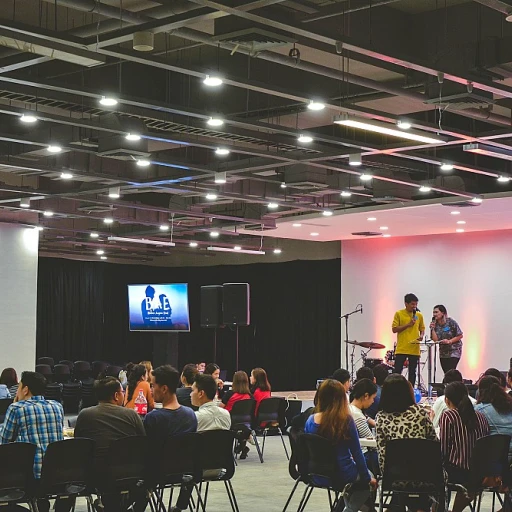
Understanding Employee Retention Software
Diving into the World of Employee Retention Software
In today's ever-competitive job market, understanding the significance of employee retention software is crucial for any organization aiming to achieve long-term success. This software serves as an integral tool to retain top talent within companies by minimizing turnover rates and enhancing employee engagement. In an age where maintaining a talented workforce is essential, leveraging the capabilities of such platforms becomes critical. Employee retention software plays multiple roles in an organization beyond just keeping turnover in check. It supports both performance management and employee development, ensuring that employees are consistently engaged in their roles. This leads to improvement in overall company culture and work environment. Features central to these platforms include real-time employee feedback, performance evaluations, and employee recognition initiatives. Feedback and recognition are two vital components that drive employee satisfaction and are often closely linked to retention strategies. These features allow companies to better understand employees' needs and adjust organizational goals accordingly, fostering continuous feedback loops that contribute significantly to employee retention. Additionally, a key goal of the software is to enhance the "employee experience" right from onboarding. Tracking employee engagement in critical ways—such as through detailed surveys and data-driven insights—provides a clearer picture of what keeps employees fulfilled at work. While choosing the best employee retention software, it’s essential to look for tools that cater to a company’s specific needs, focusing on data accuracy, intuitive dashboards, and the ability for managers to provide continuous growth opportunities. Implementing a top retention tool is one step toward crafting a robust company culture that nurtures and retains top talent, setting a precedent for future employer branding initiatives. Learn more about engaging interview questions to ask potential candidates that align with an organization's culture.The Role of Employee Retention Software in Employer Branding
Strengthening Employer Branding through Innovative Tools
In today’s fast-paced work environment, companies strive to uphold a strong employer brand. One effective way to achieve this is by incorporating employee retention software as a strategic tool. By actively addressing employee engagement, retention, and turnover rates, companies can effectively bolster their employer branding initiatives.
The integration of data-driven employee retention solutions into the company culture fosters a notable change in how current employees and potential recruits perceive the company. With features such as performance management and real-time feedback, these systems play an integral role in enhancing the overall employee experience.
Boost Engagement through Continual Feedback and Recognition
Retention software offers a platform for continuous feedback and employee recognition, which significantly affect engagement levels. By providing avenues for employees to express their views and receive feedback, companies can create a work environment that values team input and nurtures growth.
Engagement tools within retention software offer pulse surveys to assess satisfaction and help management in identifying potential areas for improvement. With insights from employee surveys, management software allows businesses to adapt and refine retention strategies to align with employee expectations, ensuring top talent feels appreciated and motivated.
Managing Employee Turnover for Performance Success
High turnover rates can negatively impact a company’s performance and its ability to maintain a strong presence in the competitive market. When businesses employ the best tools to track employee turnover and engagement metrics, they can effectively manage and reduce unwanted turnover. This not only enhances employee retention but also reinforces the company’s reputation as an employer of choice.
Using this software, organizations can pinpoint the exceptional performance of teams and acknowledge their efforts, which boosts morale and loyalty. This performance recognition can significantly improve employee satisfaction, thereby strengthening the company's brand in the job market.
Key Features to Look for in Employee Retention Software
Key Characteristics to Enhance Employee Retention
In a competitive marketplace, it's crucial for organizations to invest in employee retention software that not only addresses immediate turnover rates but also aligns with long-term organizational goals. This technology fundamentally transforms the employee experience and enhances company culture. Here's what to consider:- Real-time Employee Feedback: Successful employee retention tools prioritize communication by offering real-time feedback mechanisms. This feature encourages employees to voice concerns and suggestions promptly, fostering an open work environment that enhances satisfaction and engagement.
- Data-driven Insights: To stay ahead, opt for retention software that provides comprehensive data analytics. This allows management to understand trends in employee performance and engagement, helping to develop data-driven retention strategies. With the right data, organizations can predict potential turnover and proactively address underlying issues.
- Employee Engagement Platforms: Platforms offering continuous engagement opportunities help improve employee morale and collaboration. Tools that integrate social recognition and team-building activities contribute to a more cohesive and motivated workforce.
- Performance Management Integration: Retention software should seamlessly integrate with performance management systems. This integration allows for streamlined feedback processes and ensures that employee development is continuously aligned with organizational goals.
- Surveys and Feedback Tools: Utilizing versatile surveys and feedback tools, organizations can better understand the employee experience. These insights can guide the implementation of tailored retention strategies that resonate with top talent.
Case Studies: Successful Implementation of Retention Software
Real-world Examples of Effective Retention Software Usage
Implementing employee retention software can yield significant improvements in employee satisfaction and turnover rates. By examining some real-world cases, organizations can better understand how these tools enhance retention strategies and improve employee engagement. Consider a mid-sized technology firm that introduced a data-driven platform to address high employee turnover. The software integrated continuous feedback loops, enabling the team to collect real-time employee feedback on management practices and work environment adjustments. This platform, aligned with their performance management tools, helped identify areas where employee experience could be improved for top talent, effectively reducing its turnover rates by 15%. Another interesting case involved a company renowned for its forward-thinking company culture. By leveraging an employee feedback mechanism integrated within their retention software, they were able to roll out recognition and development programs that resonated well with employees. Engagement surveys revealed enhanced employee satisfaction, leading to increased overall performance and productivity. Moreover, in the retail sector, a company utilized a comprehensive retention tool encompassing employee engagement, work-life balance, and professional development features. By closely monitoring employee data, management could tailor engagement strategies efficiently, thus fostering a high-performance work environment. These examples highlight that the best employee retention strategies often involve a combination of effective management software, ongoing employee engagement efforts, and an adaptive approach to the employee experience. Harnessing the full potential of these platforms can be vital for organizations looking to cultivate a robust, loyal workforce.Challenges in Adopting Employee Retention Software
Addressing Adoption Hurdles in Retention Software
Adopting employee retention software can be game-changing for companies looking to reduce turnover rates and improve employee engagement, but it's not without its challenges. As companies invest in these innovative solutions, understanding potential hurdles can pave the way for smoother implementation and better results. First, organizations often face resistance to change. Employees accustomed to traditional work practices may be hesitant about adopting new management software. Overcoming this requires clear communication about the benefits of the new system, such as enhanced team engagement and improved employee satisfaction. Training sessions that demonstrate how the software's features can lead to performance management and real-time feedback are essential to easing this transition. Data management is another common challenge. The software requires accurate and up-to-date data for meaningful insights into employee experience and engagement. Companies might struggle with data integration from various existing tools within their platform. Ensuring that all data sources are aligned and compatible is crucial for a seamless user experience. Budget constraints can also pose a significant barrier. Some companies may view retention software as an unnecessary expense rather than an investment in top talent. To address this, businesses must highlight how the software's capabilities, such as continuous feedback and employee recognition, can ultimately lead to cost savings by reducing turnover and improving overall performance. Additionally, the need for customization can complicate the adoption process. Every company has unique needs based on its culture and work environment. Therefore, selecting software with flexible features and configurable retention strategies is vital to meet specific organizational goals. Finally, measuring success is critical, yet it can be challenging to quantify the impact of retention tools. Organizations need to establish clear metrics and use data-driven approaches to assess the effectiveness of the software, ensuring it aligns with the company's objectives in employee development and engagement. By addressing these challenges head-on, companies can better position themselves to leverage retention software's powerful capabilities, creating a more engaged workforce and a healthier company culture.Future Trends in Employee Retention Technology
Emerging Innovations in Retention Technology
The landscape of employee retention technology is continuously evolving to meet the demands of a dynamic workforce, seeking to enhance employee satisfaction and engagement. These developments are driven by advancements in data analytics, performance management, and employee feedback mechanisms, aiming to improve employee experience and reduce turnover rates.
One significant trend is the integration of real-time data-driven insights into retention strategies. Sophisticated platforms now offer actionable insights by analyzing employee feedback and performance data. This allows companies to take a proactive approach to employee retention, identifying potential issues before they lead to high employee turnover.
Moreover, the incorporation of continuous feedback tools is transforming the way teams interact and grow within organizations. These tools provide a framework for ongoing communication between management and team members, fostering a culture of recognition and development that is vital for top talent retention.
Another notable trend is the emphasis on personalized employee engagement strategies enabled by advanced software features. These tailored approaches consider individual employee needs, offering customized work environments and personalized development paths. This personalization is crucial for maintaining a motivated and high-performing workforce.
The focus on creating an inclusive company culture is also gaining traction, with retention software incorporating diversity and inclusion metrics as key performance indicators. By leveraging these features, organizations can improve employee engagement and satisfaction, thereby strengthening their employer brand.
With these innovations, the best retention tools are those that seamlessly integrate into existing management software, providing a comprehensive solution to tackle employee turnover. As companies continue to evolve, staying informed about technological advancements is key to implementing effective retention strategies that align with future trends.













